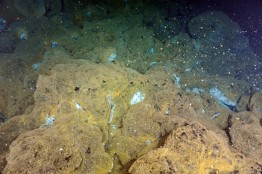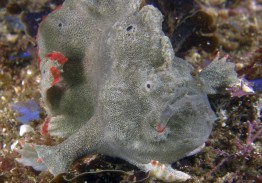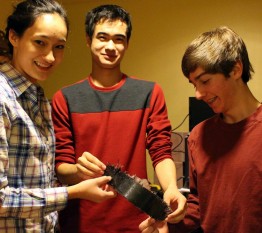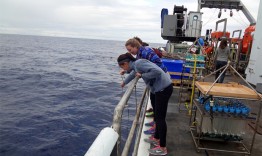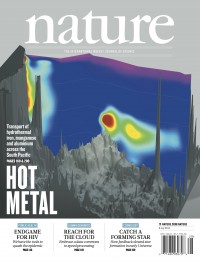This spring, seafloor seismometers connected to shore by a new Internet cable showed that the 3,600-foot-tall underwater Axial Volcano started shaking April 24, 2015 and shook continuously for several days. University of Washington oceanographers visited the deep-ocean volcano in late July and parts of the seafloor were still warm, giving the team a glimpse into the changes that happened around the the mile-deep volcano 300 miles off the Oregon coast.
Read more at UW Today »New fish genus and species named by College scientists for its red, fingerlike fins
After nearly 35 years, a color-changing fish known for its red “fingers” has a proper name. Scientists from the College of the Environment’s School of Aquatic & Fisheries Sciences announced the name of a new genus and species of frogfish, small, stocky creatures found in tropical and subtropical oceans. It was first seen and collected in Australia in 1980 by a University of Washington graduate student, but the sole specimen disappeared soon after, leaving researchers no option but to shelve the discovery.
Read more at UW Today »Local team mentored by College of the Environment staff wins ROV competition
At this year’s Marine Advanced Technology Education (MATE) International Competition in St. John, Newfoundland, three high schoolers from Seattle nabbed the top prize for their ocean-ready remote-controlled submersible, beating teams from Russia, China, and Canada to name a few. Mentored by UW oceanographers, the group—named AMNO & CO—competed against 33 teams from six countries, proving that even the smallest team in their division could come out on top.
Read more »College of the Environment students, researchers at sea to learn more about deep-sea volcano eruption
When the Axial Seamount, an underwater volcano, erupted off the coast of Oregon in April, researchers knew within minutes that something spectacular was happening more than 300 miles offshore. Precision hardware installed by the University of Washington last summer let scientists see its effects almost instantly from shore. A team of researchers, engineers and students is now at sea working to maintain that equipment and assess the volcano’s aftermath.
Read more at UW Today »JISAO, NOAA find that seafloor hot springs are significant source of ocean's iron
On the seafloor, volcanic and magmatic forces create hot springs that spew heated water into the depths of the ocean. Hot, acidic water scours metals from Earth’s crust, and these warm, chemical-rich waters support exotic deep-sea ecosystems. Historically, metals like iron and manganese were thought to quickly react and form particles that would clump together or stick to other things, causing them to sink to the seafloor.
Read more at UW Today »
